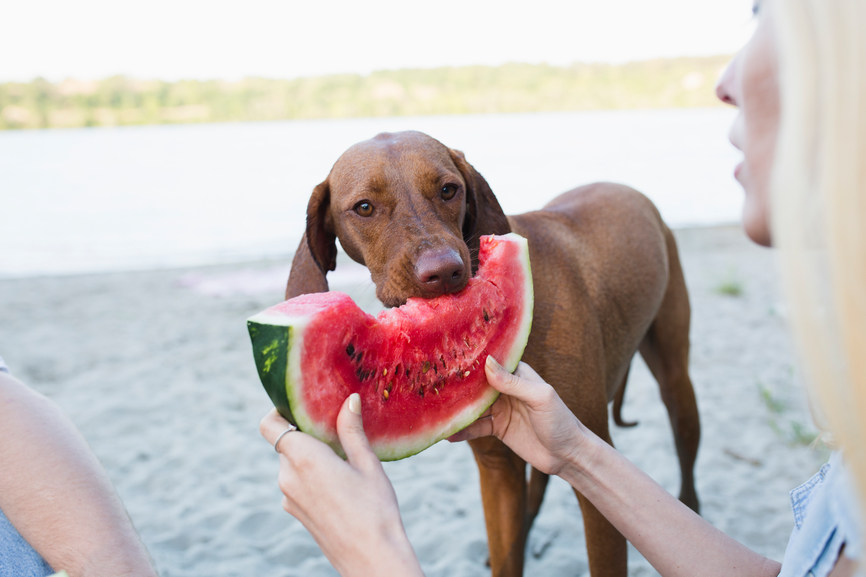Hey Ollie blog readers! We’re offering you an exclusive 60% OFF your starter box! Try now!
The way your dog sits at your feet while you’re eating a cheeseburger or always comes running when you’re frying bacon, it might seem like he has very specific food cravings. But the reality is that your pup’s inclination for certain flavors is less specific than your own.
Dogs have somewhere between 1,500 and 2,000 taste buds—only about a fifth of 10,000 those that humans have—and the smaller number means they have less sensitivity to taste, says Lindsey Bullen, DVM, DACVN, a small animal clinical nutritionist at the Veterinary Specialty Hospital of the Carolinas.
But that’s not to say they can’t tell the difference between carrots and cardboard. Of the five taste profiles (bitter, sour, sweet, salty, and umami), they gravitate toward salty and sweet. “Dogs have a strong preference for sweet, fat, and meat flavors,” says Bullen. And despite their lack of taste buds, they’re scent-detecting powerhouses: “A keen sense of smell helps your dog distinguish between foods and initiates interest,” Bullen explains.
Some dog food companies try to cater to dogs’ cravings with additives or other unhealthy ingredients. Read on for ways to avoid those traps and satisfy your pup’s cravings naturally.
Watch Out for Shady Wording
If you see the word “flavor” on your dog food’s packaging (claiming that it’s “turkey flavor” or “beef flavor,” for instance), the food likely contains very little of the actual meat—and a lot of artificial flavoring. To make dry food more appealing to pups, some brands coat the kibble with fat or “digests,” animal byproducts that are treated with heat or acids until they’re rendered down into flavor concentrates. Whereas ingredients like berries and coconut oil can satisfy those sweet and fat cravings naturally.
Don’t Be a Pushover
Sneak your pup treats under the dinner table too often and you might change their preferences or cause a picky eater, warns Bullen. “Some animals will refrain from eating their normal food because they know that their pet parents will eventually cave and give them something else,” she says.
Add a Little Heat
“Heating or cooking food can increase aroma and palatability,” says Bullen. If you want to get specific, warm it up to about 100˚ F to up the palatability, according to the American Kennel Club. Doing so won’t necessarily increase the flavor, but the amplified meaty scent will attract your pup and encourage her to eat. Cooking the food also ups its digestibility, Bullen adds—it’s easier for your dog to process the food and use its nutrients.
Target Cravings with Healthy Treats
Jerky can satisfy a meaty craving; look for varieties that have 100% on the label (100% chicken, for example) or that have only one ingredient—the type of meat listed. For a dog that gravitates toward sweet stuff instead, pupcakes like these are easy and healthy to whip up.
Try a Human-Grade Diet
Instead of handing your pup scraps of turkey from your dish and putting kibble in their bowl, integrate real turkey into their diet! Lean proteins will naturally satisfy their meat cravings, fruits like apples and blueberries will give them a sweet fix, and peanut butter will check the fat box. And they’re all things you would eat too.
The Ollie blog is devoted to helping pet parents lead healthier lives with their pups. If you want to learn more about our fresh, human-grade food, check out MyOllie.com.
Tagged As:

The nutrition your dog needs,
the food they want.

Enjoying our articles? Subscribe our Newsletters and get new articles directly to your inbox
You might also like
11 September 2025
5 MINS READ
Does Your Dog Need Organic Food?
With terms like “organic,” “fresh,” and “human-grade” floating around, it can be hard to determine how these diets are different and which options are best for your dog. While organic dog food sou…
by Ollie Pets
11 September 2025
5 MINS READ
Avoiding Common Dog Food Allergies
No pup parent wants to see their dog struggle through the discomfort and complications that come with food allergies. While food allergies affect just 0.2 percent of dogs according to Banfield Pet…
by Ollie Pets
29 August 2025
8 MINS READ
Ultra-Processed Kibble Risks: The Science of Safer Fresh Meals
Like most pup parents, you want to give your dog the best life possible. While you might carefully read ingredient lists on dog food labels, there’s something potentially harmful lurking in ultra-…
by Ollie Pets







